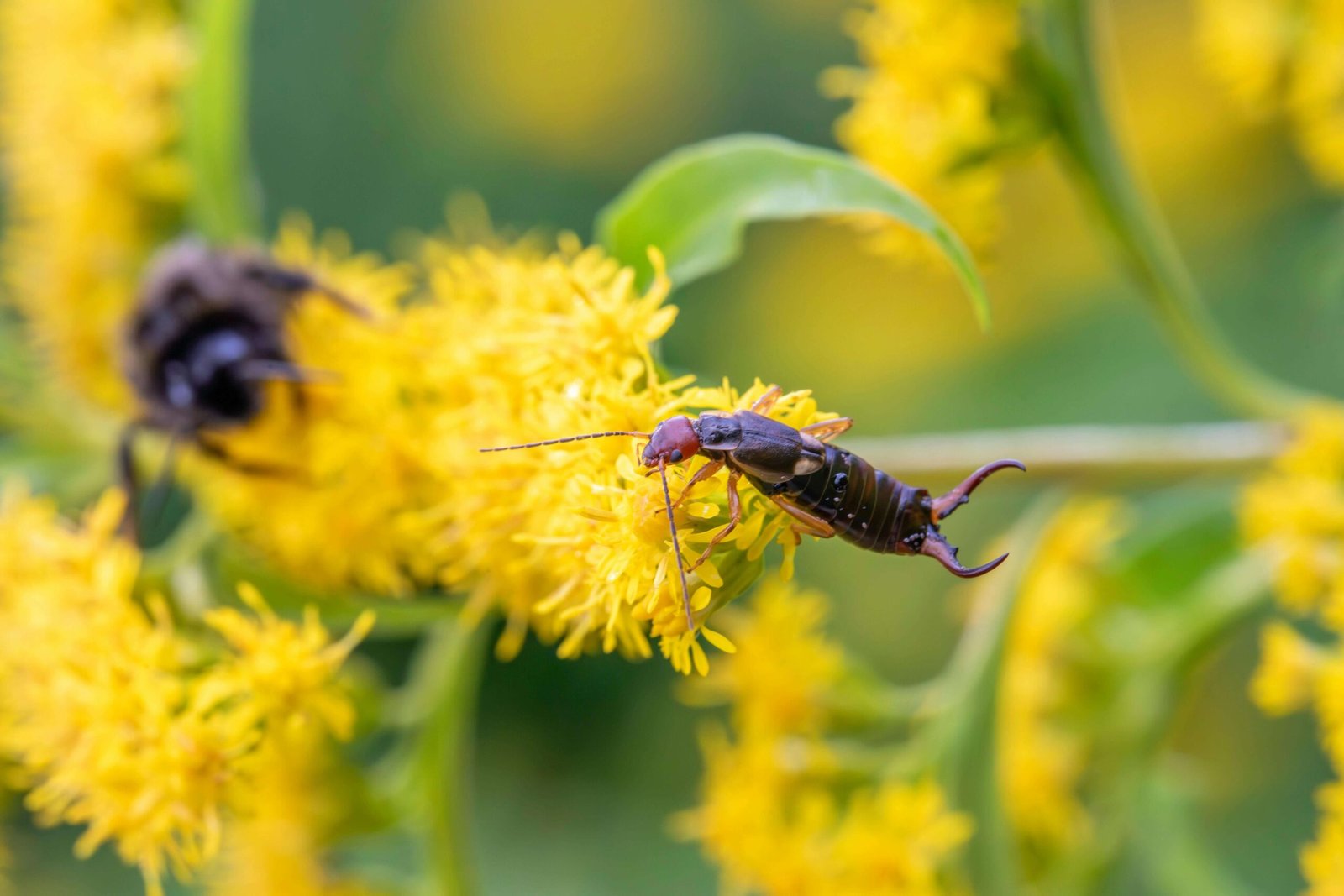
Understanding Earwigs in Your Home: Identification and Control
Earwigs are common household pests that can cause distress for homeowners. These elongated, flat insects are typically brown or black, with distinctive pincers (cerci) on their rear end, giving them a unique appearance. They are nocturnal creatures, preferring dark, damp environments, which makes them more likely to be found in basements, bathrooms, and kitchens.
Identifying Earwigs
Physical Characteristics:
- Size: Earwigs typically range from 5 to 25 mm in length.
- Body Shape: Their bodies are elongated and flattened.
- Pincers: The most distinctive feature is their pincers, which vary in size and shape between males and females. Males have larger, curved pincers, while females have smaller, straighter ones.
Behavior:
- Nocturnal Activity: Earwigs are primarily active at night, hiding during the day in moist, dark places.
- Diet: They are omnivorous, feeding on decaying plant matter, leaves, and other insects.
Why Are Earwigs in Your House?
Earwigs often invade homes in search of food and moisture. They are attracted to decaying organic matter, which can be found in gardens and compost piles. Changes in weather, such as heavy rain or drought, can also push them indoors in search of shelter.
Signs of an Earwig Infestation
- Physical Sightings: The most obvious sign is seeing earwigs themselves, especially during the evening.
- Droppings: Look for small, dark pellets that resemble mouse droppings, which indicate their presence.
- Damage to Plants: If you have indoor plants, earwigs may feed on them, leaving behind irregular holes.
How to Get Rid of Earwigs in Your House
- Reduce Moisture:
- Fix Leaks: Repair any leaky pipes, faucets, or roofs to reduce humidity levels in your home.
- Use Dehumidifiers: In particularly damp areas, like basements, a dehumidifier can help keep moisture levels low.
- Seal Entry Points:
- Inspect Your Home: Check for cracks, gaps, and openings around windows, doors, and the foundation. Seal these with caulk or weather stripping.
- Install Screens: Use fine mesh screens on windows and vents to keep pests out.
- Remove Hiding Places:
- Declutter: Remove piles of newspapers, cardboard, and other clutter where earwigs can hide.
- Outdoor Cleanup: Keep your yard tidy by removing debris, mulch, and other organic matter that can attract earwigs.
- Use Traps:
- Moisture Traps: Place damp cardboard or towels in areas where you’ve noticed earwigs. Check them regularly and dispose of any trapped insects.
- Commercial Traps: Sticky traps designed for pests can also be effective in catching earwigs.
- Insecticides:
- Chemical Treatments: If the infestation is severe, consider using insecticides specifically labeled for earwig control. Apply these products according to the manufacturer’s instructions.
- Natural Options: Diatomaceous earth can be sprinkled in areas where earwigs are present. It is a non-toxic option that dehydrates insects upon contact.
- Professional Pest Control:
- If home remedies and preventive measures don’t work, consider hiring a professional pest control service. They can provide targeted treatments and help identify underlying issues contributing to the infestation.
Preventing Future Infestations
- Maintain Indoor Cleanliness: Regular cleaning and vacuuming can help prevent earwig populations from growing.
- Check Indoor Plants: Inspect plants before bringing them inside, as they can harbor earwigs.
- Landscape Smartly: Avoid mulching too close to the foundation of your home and keep plants trimmed to reduce moisture buildup.
Conclusion
While earwigs are generally harmless and can even be beneficial in the garden, their presence indoors can be unsettling. By taking proactive measures to reduce moisture, seal entry points, and eliminate hiding places, homeowners can effectively control and prevent earwig infestations. Should the problem persist, consulting with a pest control professional may provide the best solution for a comfortable, pest-free home.